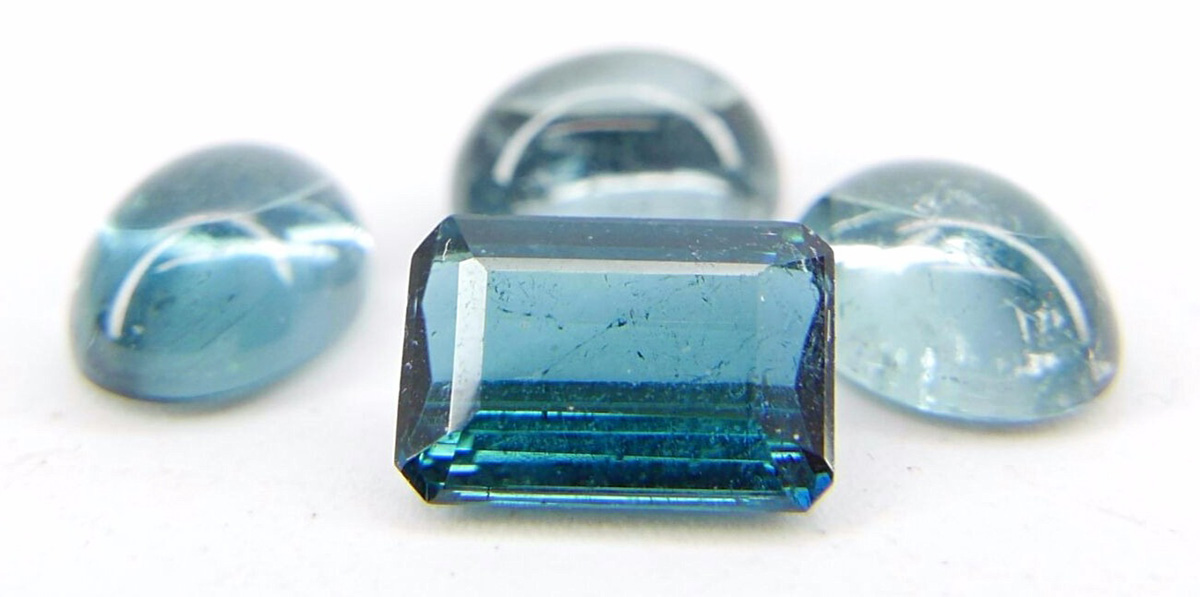
PHYSICAL PROPERTIES
- GROUP Silicates - cyclosilicates
- COMPOSITION Na(Mg,Fe,Li,Mn,Al)3Al6(BO3 )3If6 · 018(OH,F)4
- COLOR Black, green, brown, red, blue, yellow or pink
- CRYSTALLINE SYSTEM Hexagonal / trigonal
- CRYSTALLINE HABIT Prismatic, acicular
- HARDNESS 7 - 7.5
- FRACTURE Unequal to conchoidal
- EXFOLIATION Null
- GLOSS Vitreous
- STRIP Colorless
- TRANSPARENCY From transparent to translucent
- SPECIFIC GRAVITY 3.0 - 3.2
- REFRACTIVE INDEX 1.61 - 1.64
MINERALOGICAL CHARACTERISTICS
The blue tourmaline or indigolite is a variety of tourmaline with bluish tones. It belongs to the elbaite family, which are gem quality chromatic tourmalines. Within this family are also the pink, red and green varieties. Colored tourmalines are characterized by their dichroism and are usually scarce and valued in jewelry making.
The tourmalines are borosilicates that are characterized by having a variable composition between them although they have the same crystalline structure. Its crystals are usually prismatic and it is found in pegmatites, in granites, in hydrothermal veins and in pneumatolithic veins.
Deposits: Brazil, India, Afghanistan, United States, Canada, Mexico, Namibia, Russia, Africa and Madagascar.
THERAPEUTIC PROPERTIES
The blue tourmaline or indigolite is preferably used in the chakras of the throat and third eye. Helps stimulate and balance communication and vision.
The tourmaline is considered a stone of cleansing, protection and transformation. Whatever the ailment of the physical body, tourmaline helps to regenerate and balance it on an energetic level. It is said that the strength of tourmaline is due to the shape of its parallel grooves, which transform dense energies and increase vibration.
At a healing level, it is said that blue tourmaline is often used to heal eye conditions, to reduce inflammation and for headaches, toothaches and earaches.


